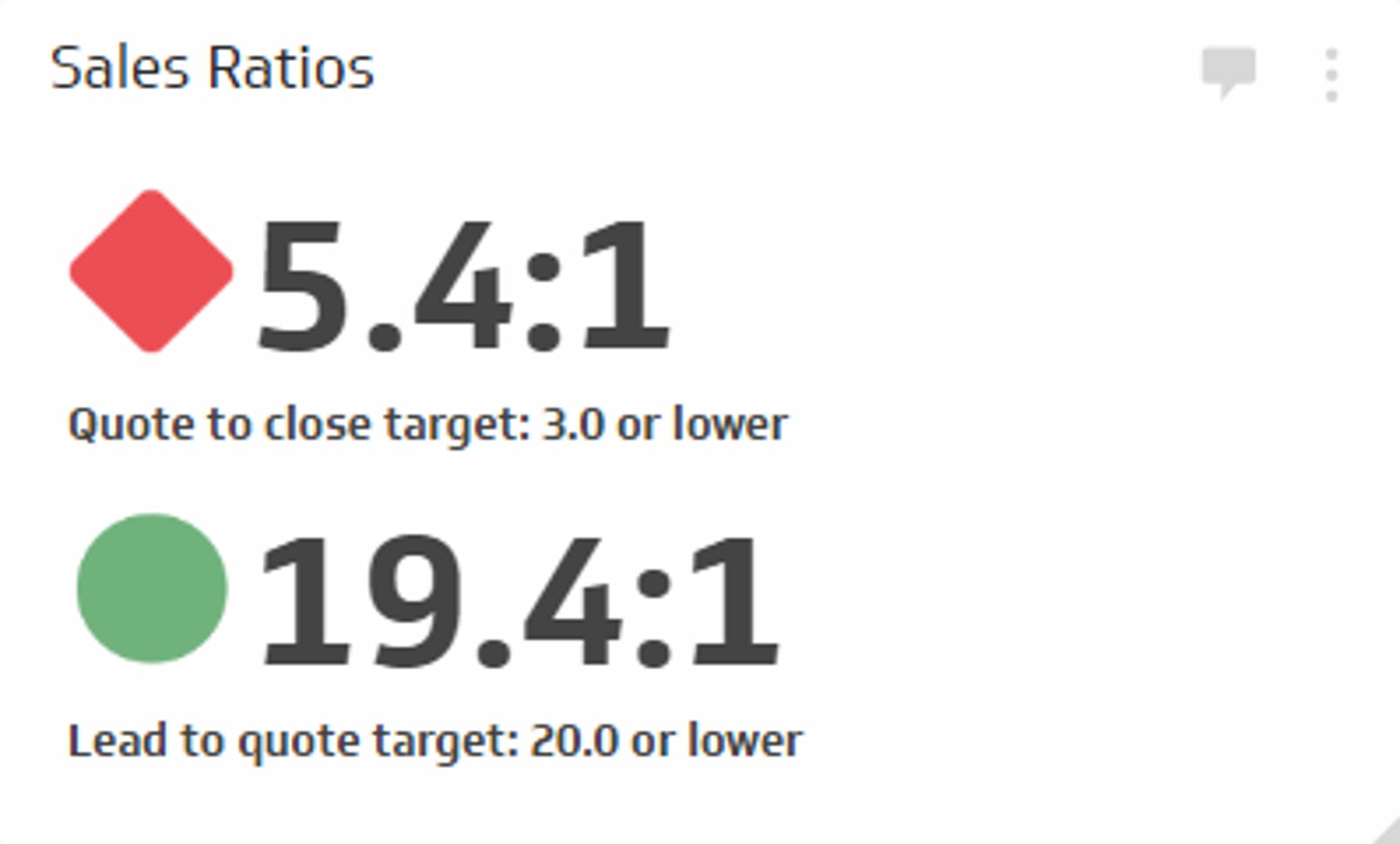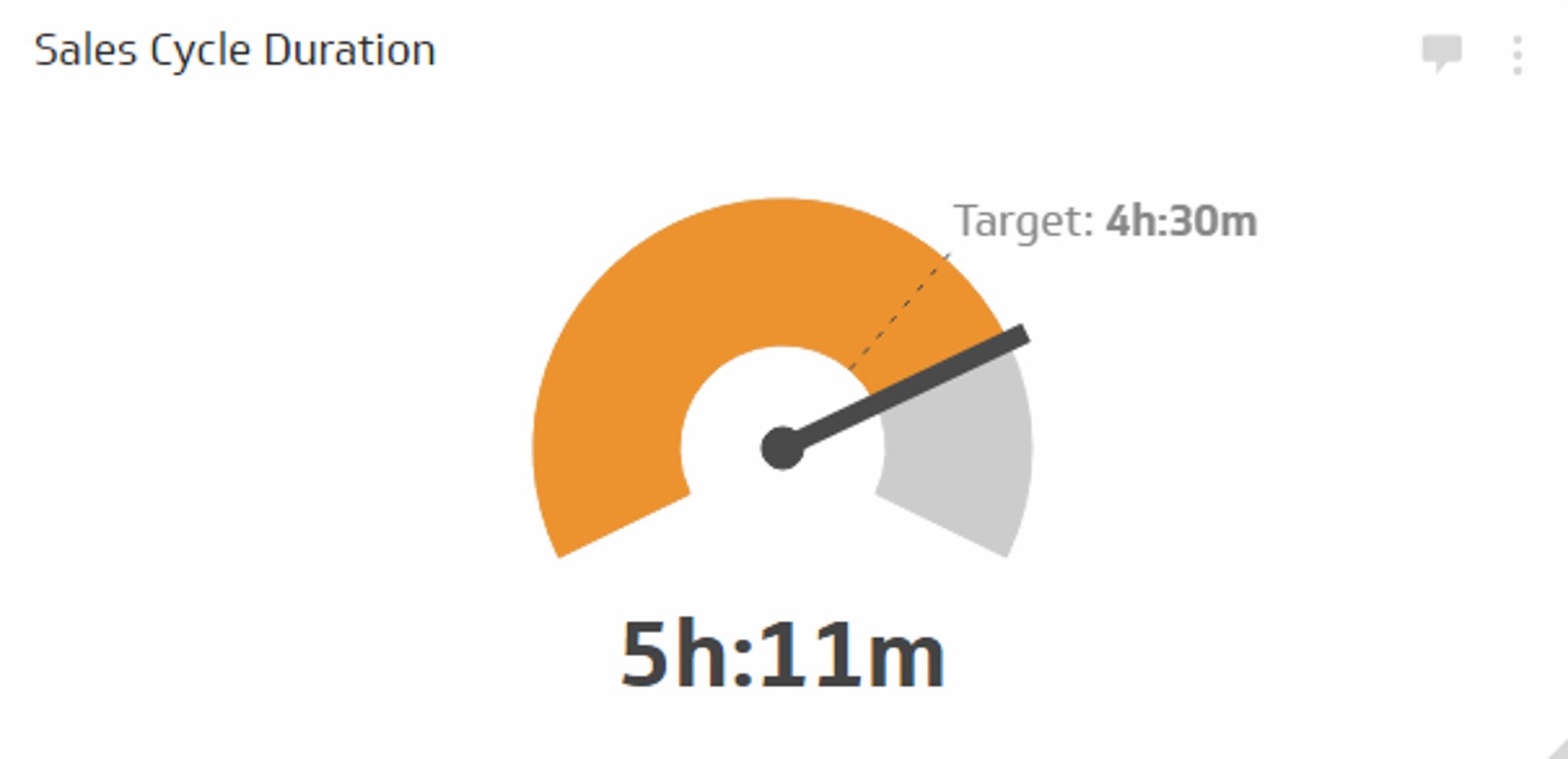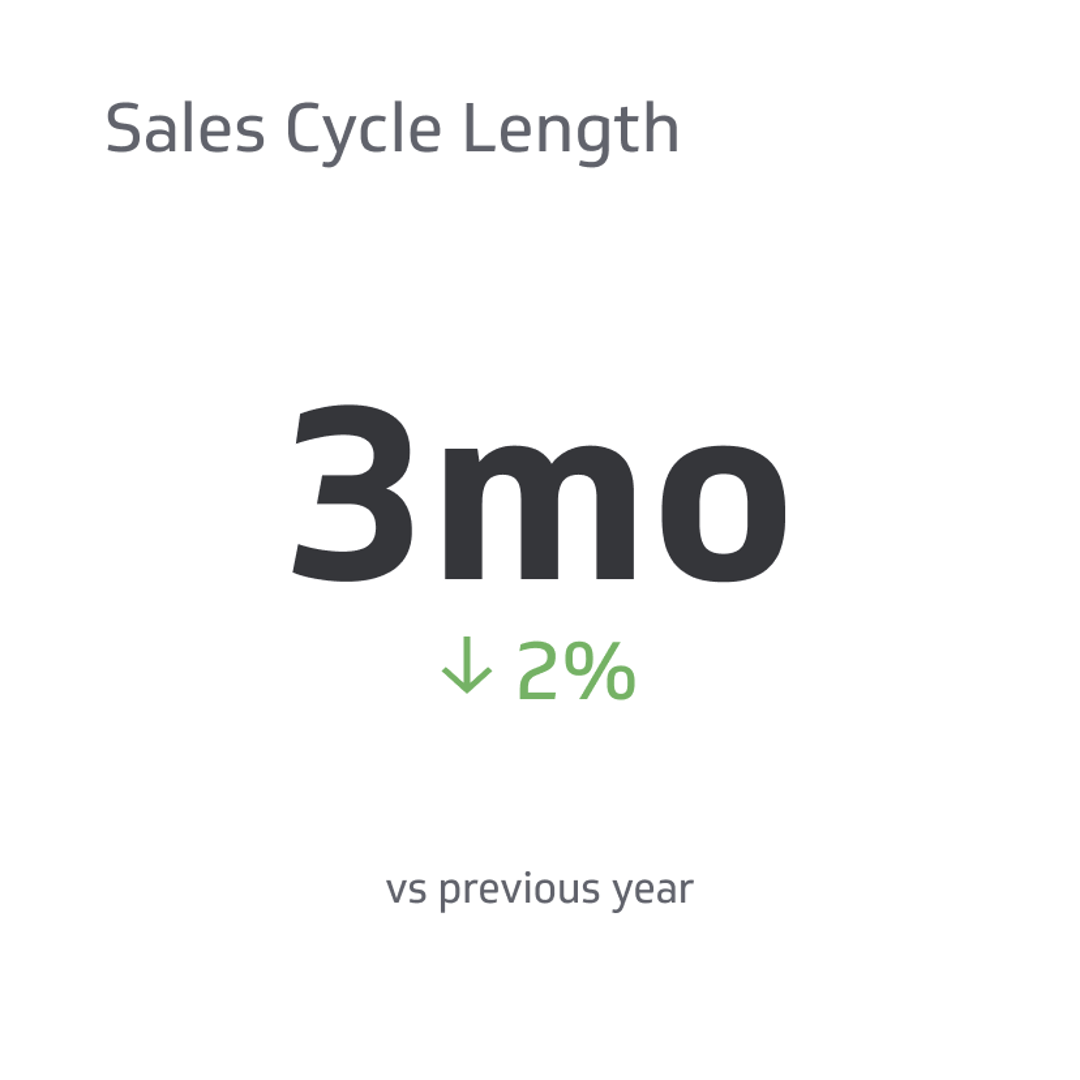Sales Closing Ratio
Measure the number of formal quotes sent compared to the number of deals closed.
Track all your Sales KPIs in one place
Sign up for free and start making decisions for your business with confidence.

What is Closing Ratio?
The Sales Closing Ratio is the metric that measures the number of prospects engaged by your sales team compared to the number of deals won. This conversion ratio is designed to analyze the effectiveness and duration of your sales funnel.
For example, it should measure or account for the number of formal quotes sent out by your sales team versus deals signed.
In order to calculate your sales ratio, you need to identify a discrete stage in the later stage of your sales process, such as sending out a quote. This will focus your analysis on a specific event and concentrate on qualified prospects within your funnel.
How to Calculate Sales Closing Rate
Sales Closing Ratio = (Number of Quotes sent to Qualified Prospects/Prospects who converted)x100
Key terms
Here are examples of sales metrics that are key in measuring your team's closing ratio:
- Quote: A formal or informal proposal for a sales transaction.
- Lead: New prospects generated by a marketing campaign.
- Wins / Closed deals: New customers generated through sales efforts.
Key Indicators for Sales Closing Rate
- A low or decreasing quote-to-close ratio.
- A low or decreasing lead-to-quote ratio.
- An increase in the quality of leads.
Who uses the Sales Closing Rate metric?
Executives, Sales Directors, Sales Managers, Sales Reps
The Importance of Closing Ration in Sales
A closing ratio for sales is the number of deals closed compared to the number of formal quotes sent by your team. For example, if you send 20 quotes this month, and 5 of those people converted, your closing ratio is 25%.
The key part of measuring your closing ratio is to benchmark your performance against historical trends and business targets. This is critical whenever you engage in sales forecasting activities, particularly salesforce effectiveness and revenue predictions.
Sales and marketing alignment using sales closing ratio
The sales closing ratio represents a key point of intersection between sales and marketing. Marketing is tasked with attracting quality leads, while sales are tasked with qualifying and closing prospects. Conversion rates are the language by which sales and marketing communicate.
An unaligned team can find themselves in a very peculiar situation. Let’s say your marketing team is tasked with hitting a target, such as a number of leads. This is motivating, and your team seeks a new vein of marketing leads and hits their target. On the surface, it looks good.
However, the sales team immediately notices something amiss: lead quality is down, and closing rates are dropping precipitously. Sales complain that marketing is providing poor quality leads, but marketing feels they have an out since they hit their target. Antagonisms arise in such an environment.
By aligning around sales closing ratios, both teams can work towards the same target. Instead of a fragmented view of the universe, sales and marketing are both focused on quality.
Related Metrics & KPIs



